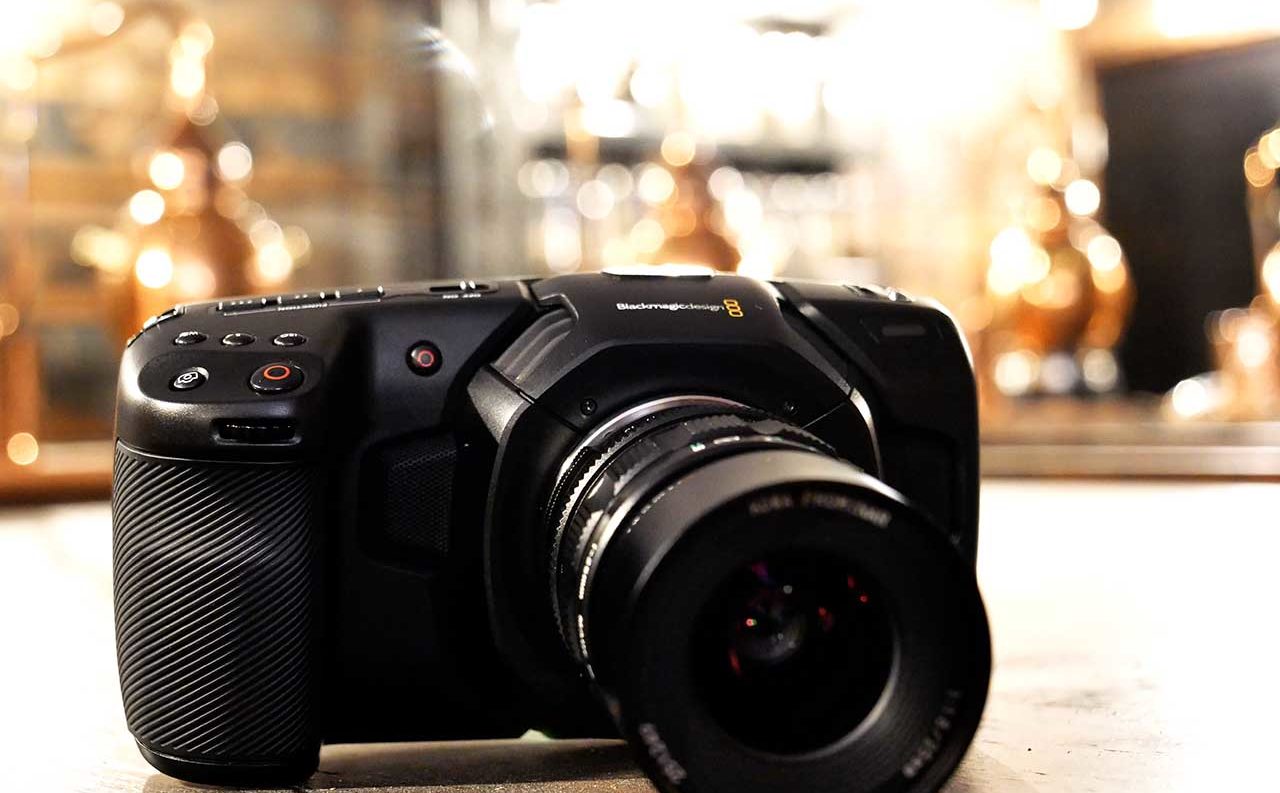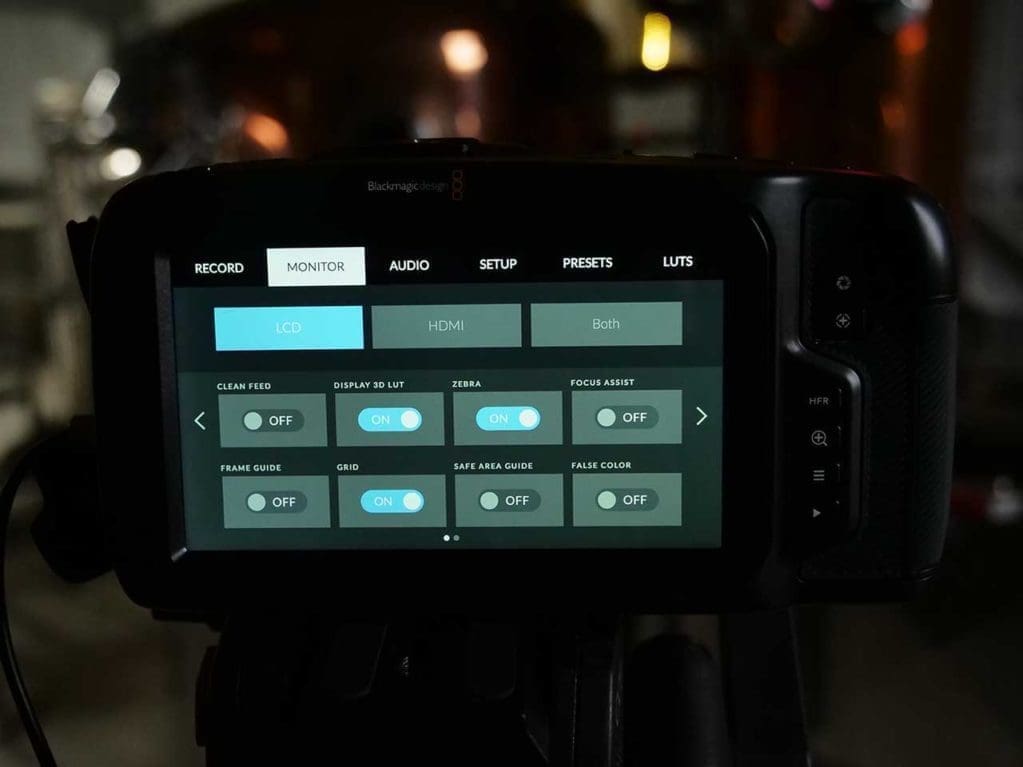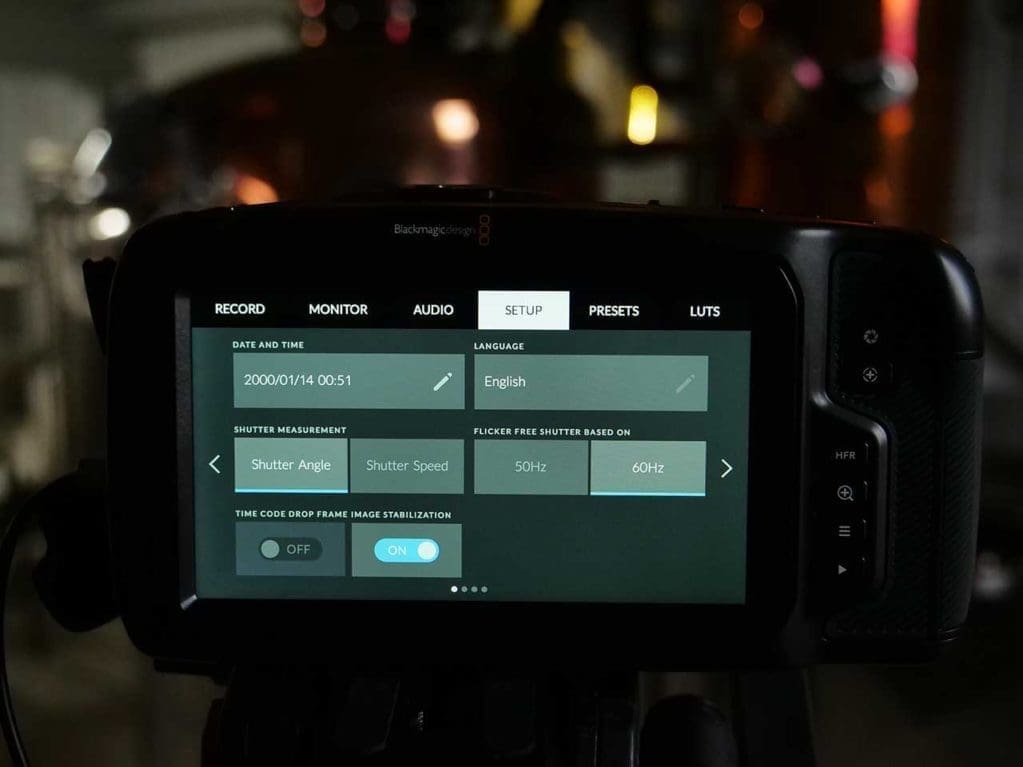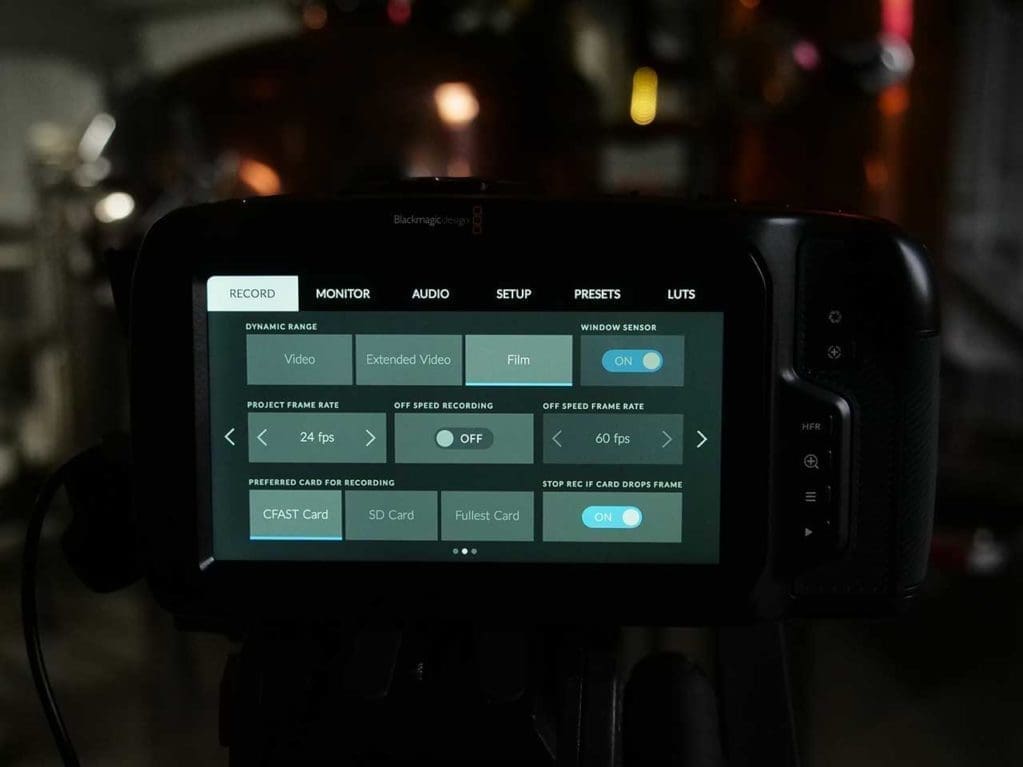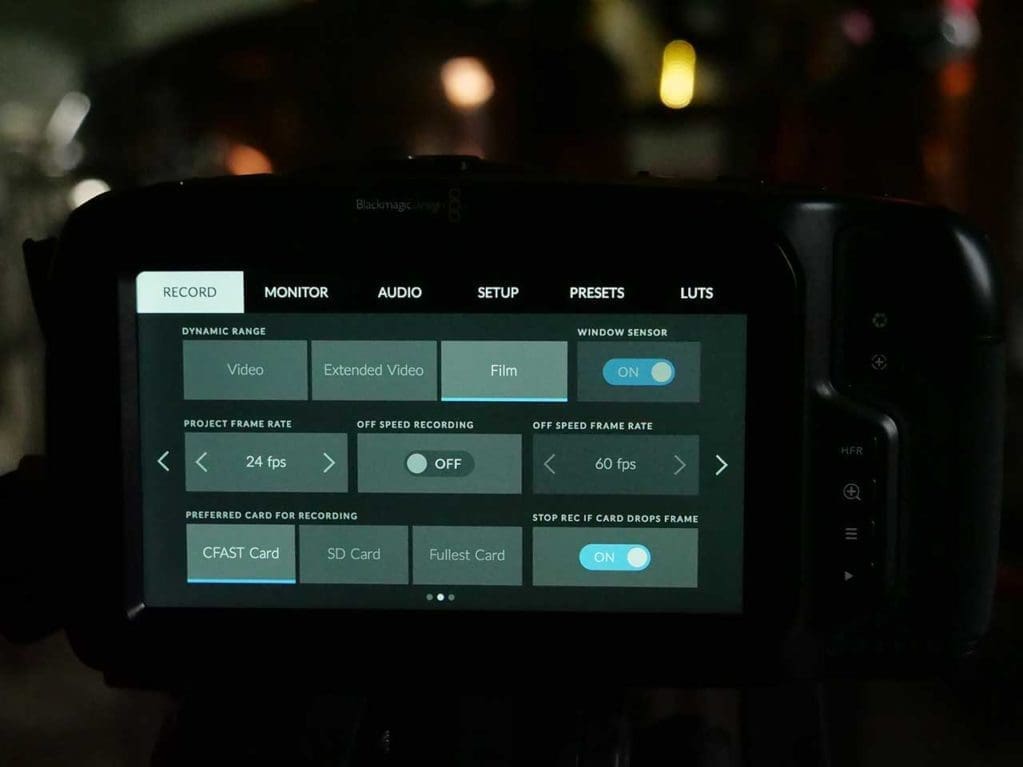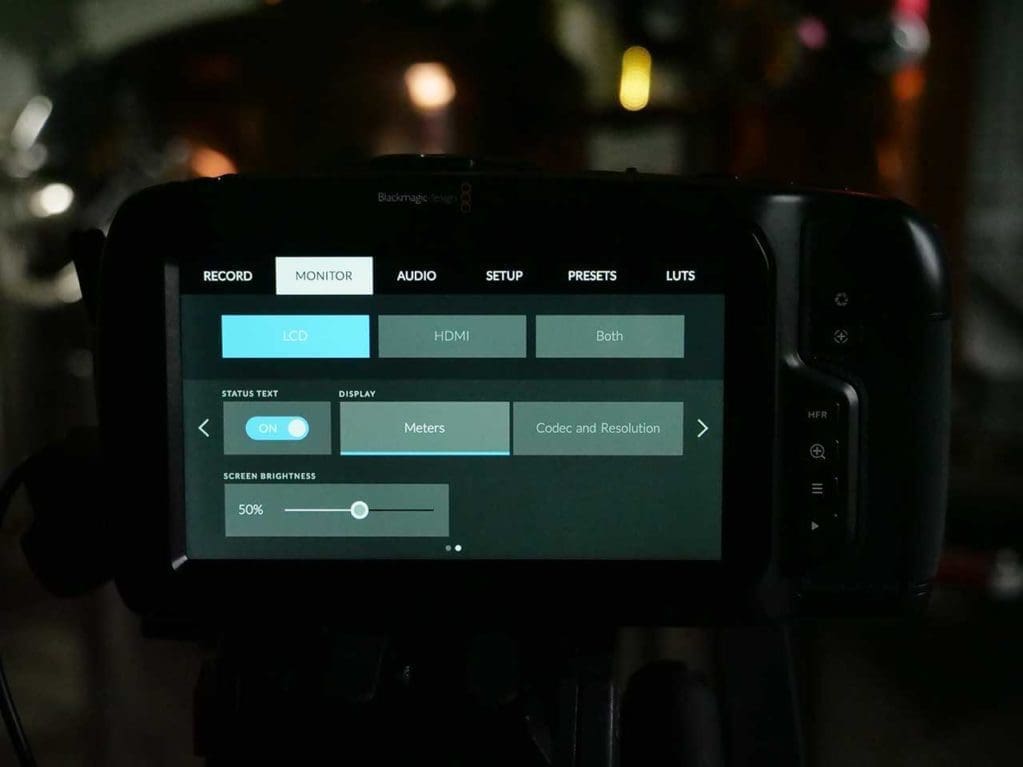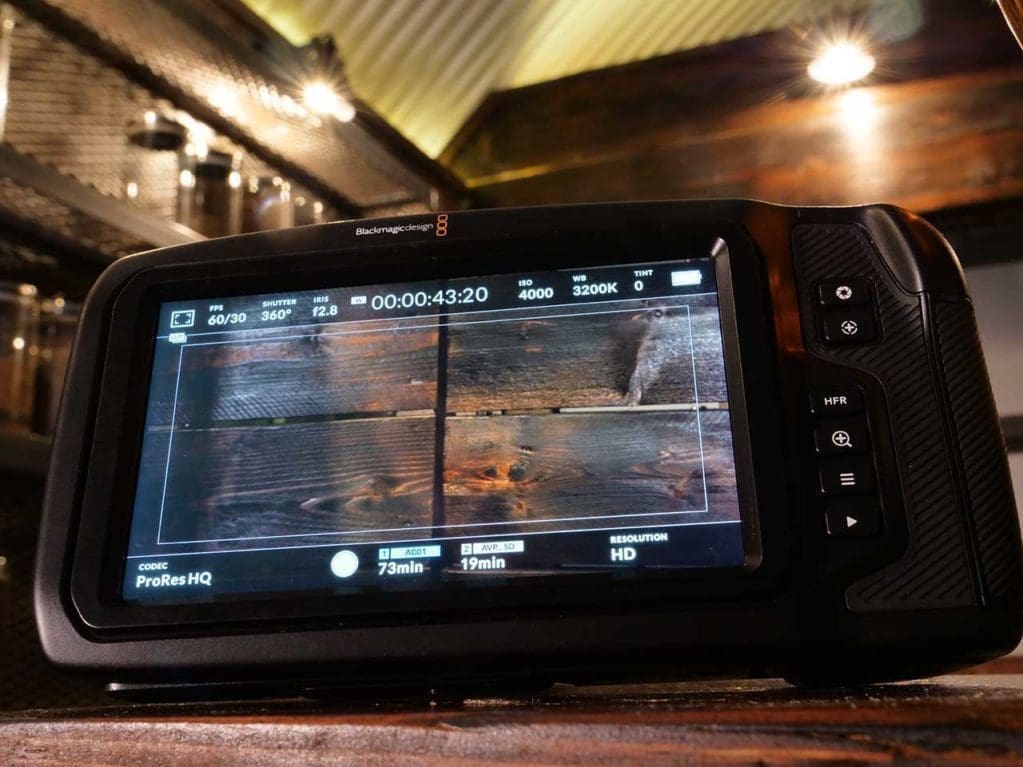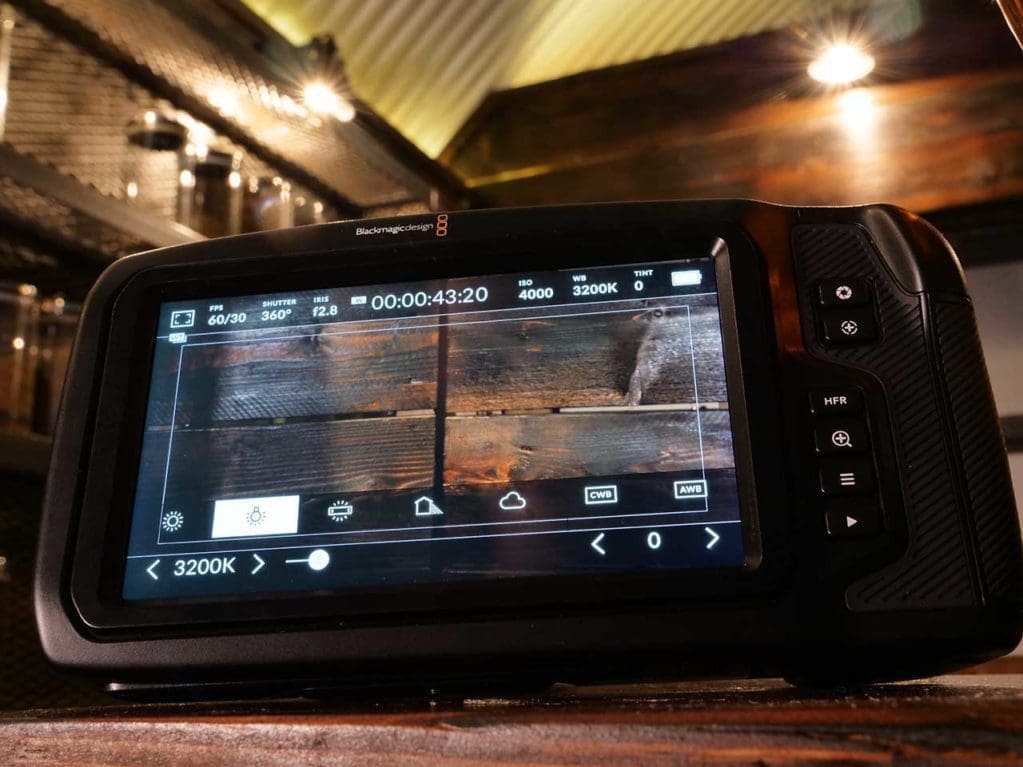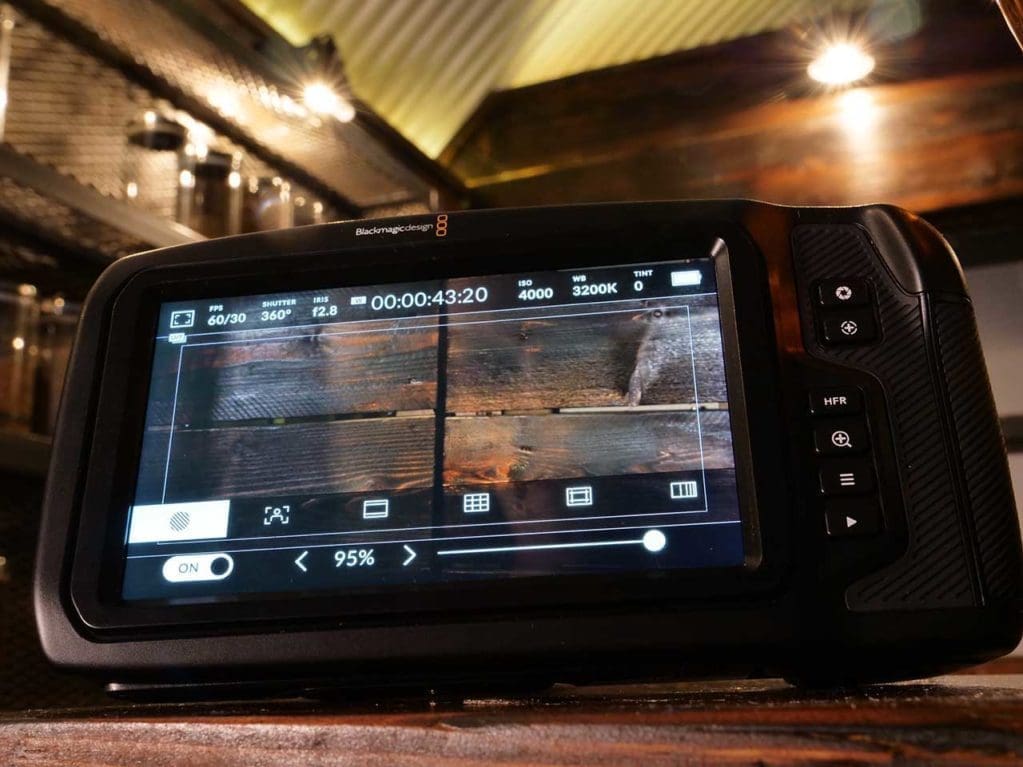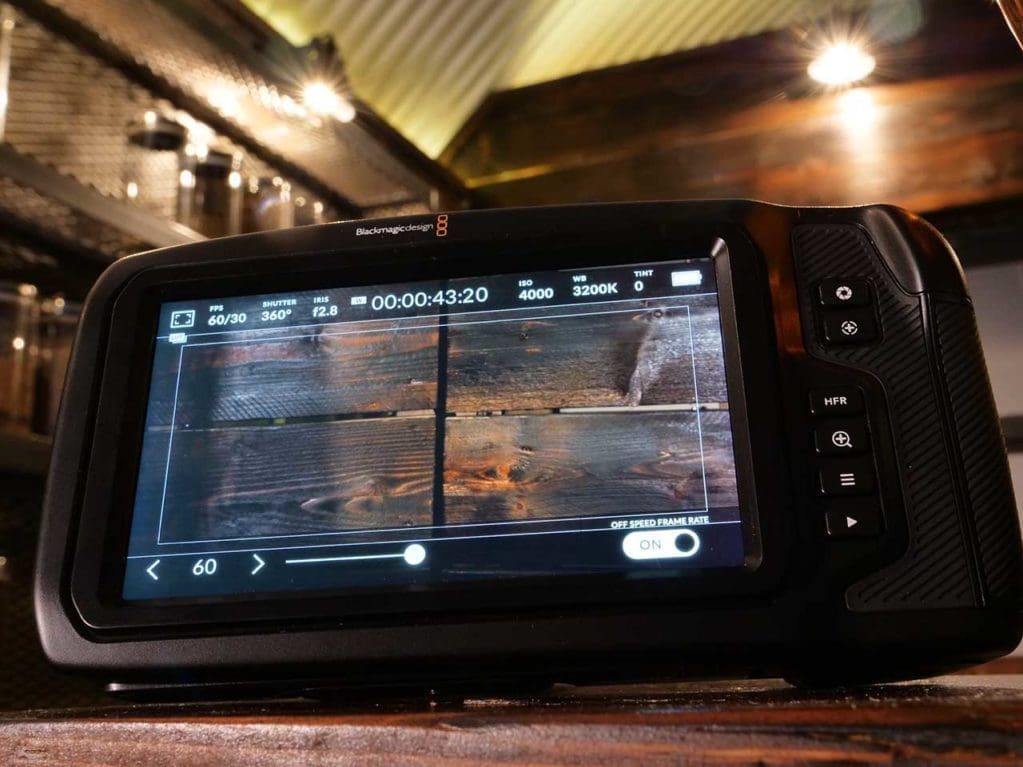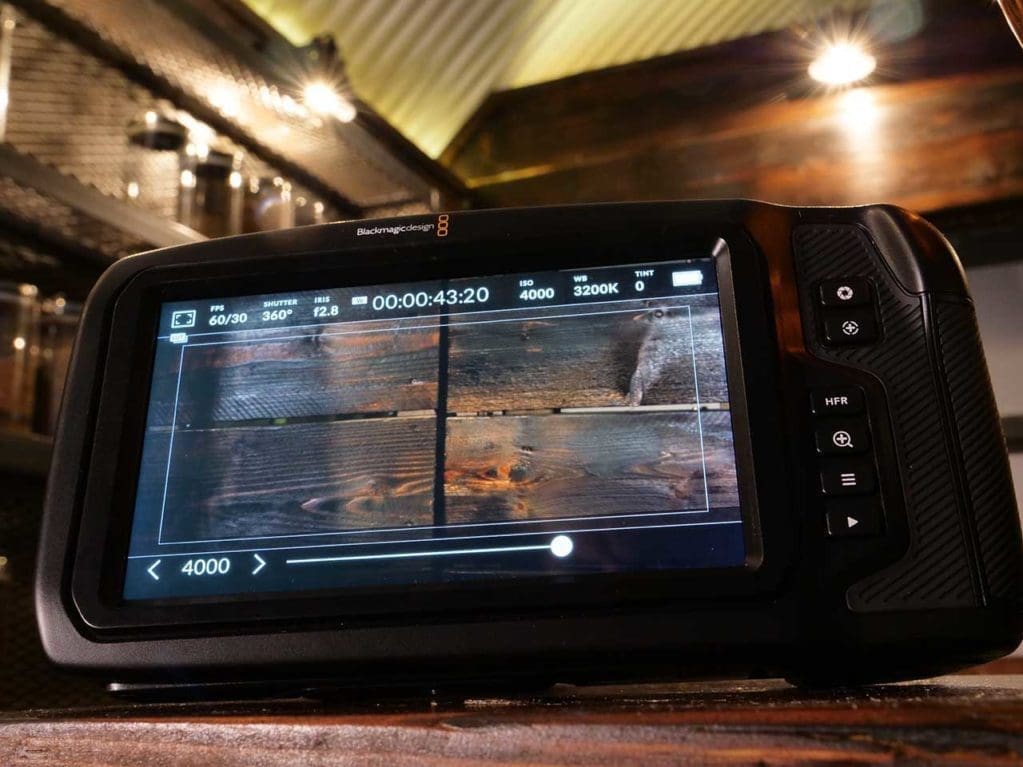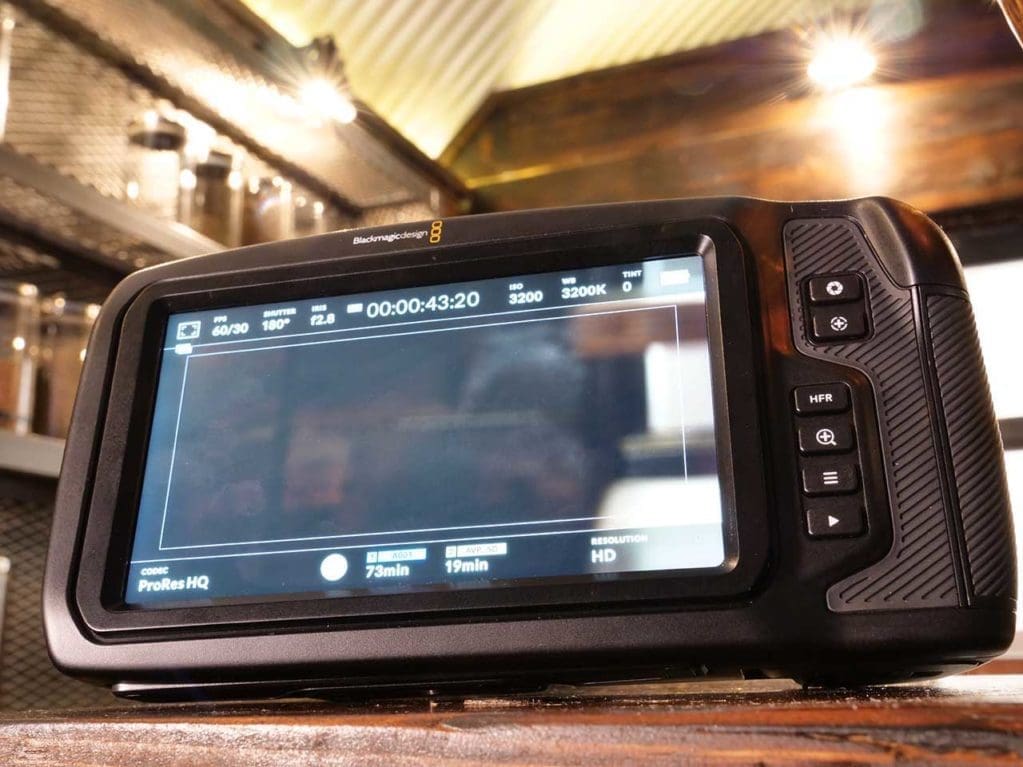What is the Blackmagic Pocket Cinema Camera 4K?
Blackmagic announced its Pocket Cinema Camera 4K at the NAB show in Las Vegas earlier this year, and the interest it’s drawn has been unprecedented. And there’s a reason for this. It’s a cinema camera that has a lot of crossover appeal.
It has advanced features that appeal to professional videographers as well as vlogger-friendly functions and ease of use for those taking their first steps in video.
Couple that with a £1000 price point, and suddenly we’re looking at a proper high-spec cinema camera that is half the price of the Sony A7 III, £500 cheaper than the Panasonic GH5 and, really one of a kind in the market.
The Blackmagic Pocket Cinema Camera 4K has all the potential to be the Pentax K1000 of its generation and bring cinematography to the masses.
Blackmagic Pocket Cinema Camera 4K Specs
- Dual native ISO at 400 and 3200
- 4K sensor
- 13 stops dynamic range
- 12-bit raw
If you are a professional photographer, you will find the features you need to do your job. If you are taking your first steps in video, you will find its menu user-friendly along with plenty of direct controls, making this a camera you can make mistakes with and learn from and grow with. Let me explain.
First, lets run through some of the important specifications. The key technology in this camera in my opinion is its dual native ISO (up to 25,600).
Dual native ISO
The Blackmagic Pocket Cinema Camera 4K boasts two gain circuits behind each photo site. Each of these is optimised for ISO 400 and 3200.
In a single ISO system, when you increase your ISO setting in low light you are effectively taking a stop from the bottom of your dynamic range and losing info from the shadows. In a dual system like the Pocket Cinema Camera 4K, the gain curve resets once you get to ISO 1250 and you’re then getting similar shadow performance as if you were shooting at ISO 100.
In fact, as one of the technicians on hand during our time with the camera pointed out, if you’re shooting at ISO 800 or 1000, you’re probably better off pushing it up to 1600.
Sensor
Inside the Blackmagic Pocket Cinema Camera 4K is a 4/3 HDR sensor with 4K resolution that provides 13 stops of dynamic range.
It can record 12-bit CinemaDNG RAW cinema 4K at 60fps and full HD video at up to 120fps, as well as 10-bit Apple ProRes 422.
Extended Video Mode
Extended Video Mode is a recording option that sits between Film and Video. Let’s put it in layman’s terms.
Film mode records flat footage that’s full of detail, which you need to colour grade in post. Video mode is designed for video that needs a quick turnaround. It’s video with accurate tones for when you don’t have the time or inclination to colour grade your footage.
This comes at the expense of some detail, though, particularly in your highlights. The new Extended Video Mode is sort of a halfway house between Film and Video modes. You don’t have to grade footage shot in Extended Video Mode, but it provides an increased dynamic range and pulls back some of the highlight clipping, particularly when shooting wider scenes.
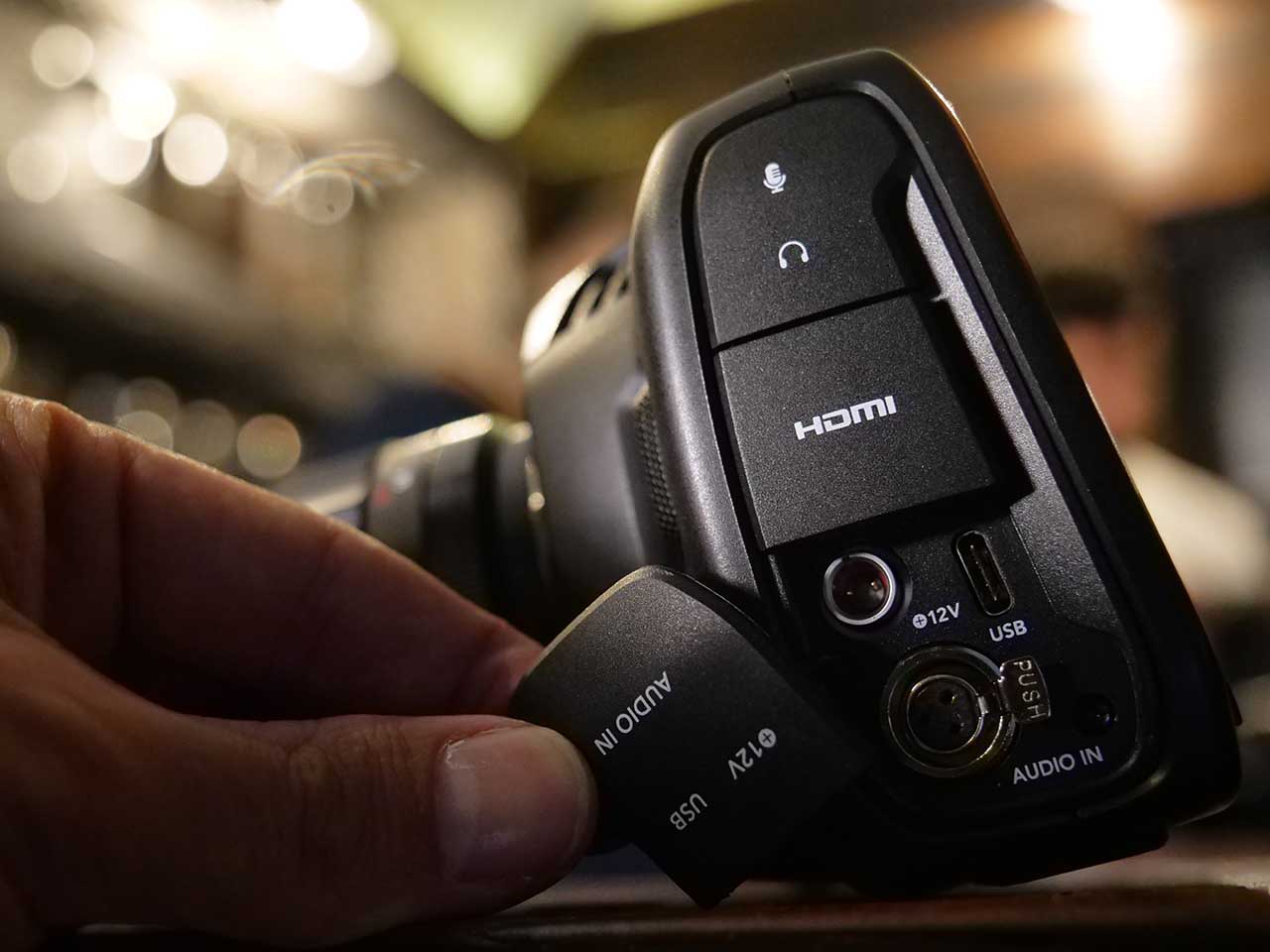
Audio
You’ll also find a variety of audio options. For starters, there are four mics positioned on either side of the lens mount. Blackmagic says it has optimised these with an extremely low noise floor.
There’s a 3.5mm stereo audio jack via which you can mount a number of different types of microphones. Most interesting, however, is the mini XLR input. This allows you to connect professional audio solutions such as lapel mics or booms.
USB-C port
Another interesting feature of the Blackmagic Pocket Cinema Camera 4K is its built-in USB-C port. This allows you to connect an external SSD to which you can directly record your footage.
What this means is that you can have the advantage of higher storage capacities at a lower cost than if your only option was internal media.
What’s more, you can then take these external drives straight to your editing suite and get started straightaway without having to wait on file transfers.
Another advantage is that this USB-C port can be used to charge the camera. This can be more cost effective than buying multiple batteries.
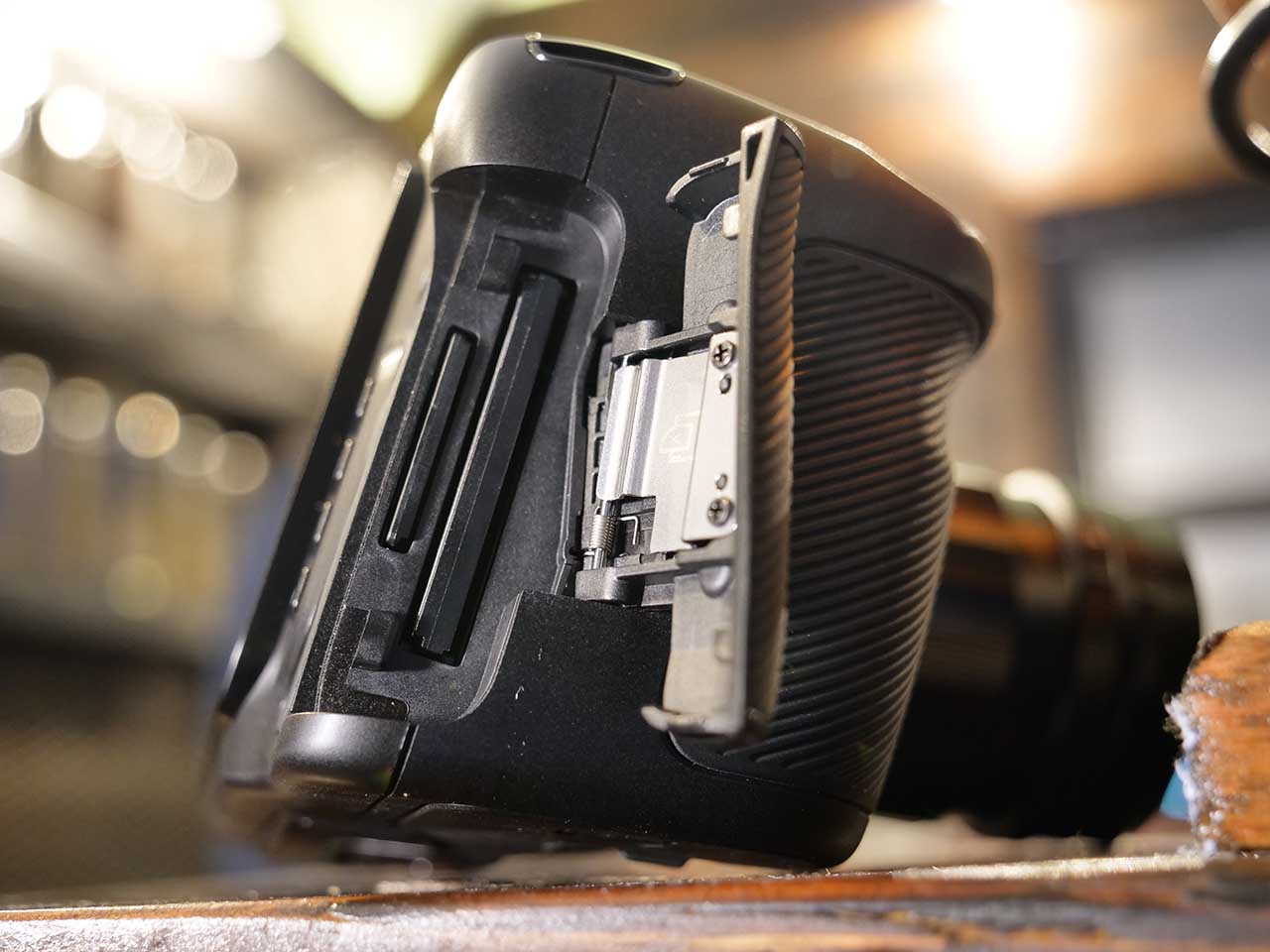
Dual internal media
The Blackmagic Pocket Cinema Camera 4K has dual card slots for both SD and CFast cards.
CFast cards are expensive, but they are really necessary if you’re recording 4K footage. But Blackmagic has included an SD card slot as well because it knows many users will only have SD cards.
Battery
The Blackmagic Pocket Cinema Camera 4K uses Canon LP-E6N batteries, which last for about an hour. You can also plug the camera into the mains via a DC12 volt power connection.
Another interesting feature is that the battery door unhinges and can be removed. Blackmagic says it designed the camera this way to open the door for third-party power options.
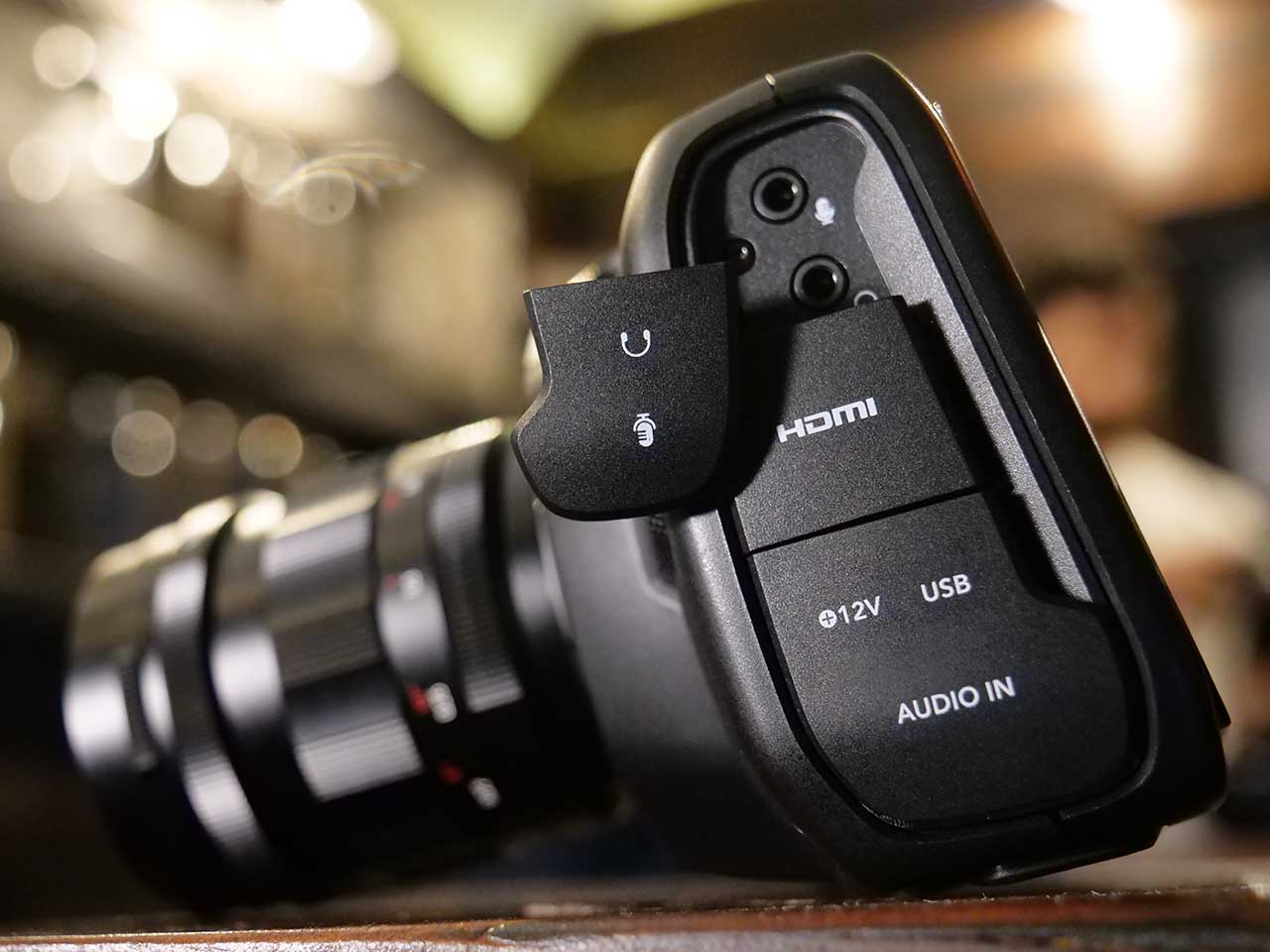
Other Features
Another standout feature of the Blackmagic Pocket Cinema Camera 4K is its 5-inch touchscreen.
You’ll also find Time Code, a headphone input, as well as a 1.4 HDMI port and the option for Bluetooth wireless camera control.
You can also burn LUTs directly to your clips by swiping a simple slider in the menu system.
The Blackmagic Pocket Cinema Camera 4K also retains the Micro Four Thirds mount. Blackmagic says it stayed with the MFT mount because its lens family has grown considerably over the years.
Build Quality
- Carbon fibre construction
- Deep handgrip
- Plenty of direct controls
The Blackmagic Pocket Cinema Camera 4K may be testing the definition of the word ‘pocket’, but it is still a small and certainly light camera considering all that spec inside it. It would fit inside the pocket of your winter parka, but I think you’d be hard pressed to get it inside the pocket of your jeans or hoodie. But I digress.
The Pocket Cinema Camera 4K is nevertheless a small camera by cinema camera standards and it’s been designed to be handheld. The body is made of carbon fibre, which makes it very light to hold, but also stable.
It does have that plasticky feel you often get from entry-level DSLRs. However, it felt solid and stable in my time with it, which is aided by a deep handgrip that your hand conveniently wraps around. The body design is really more akin to a small DSLR.
The doors to the audio inputs and other ports are rubber and fasten via plugs. These all opened and could be secured quite easily. On the other side, the dual memory card slots sit behind a polycarbonate door that you slide to open.
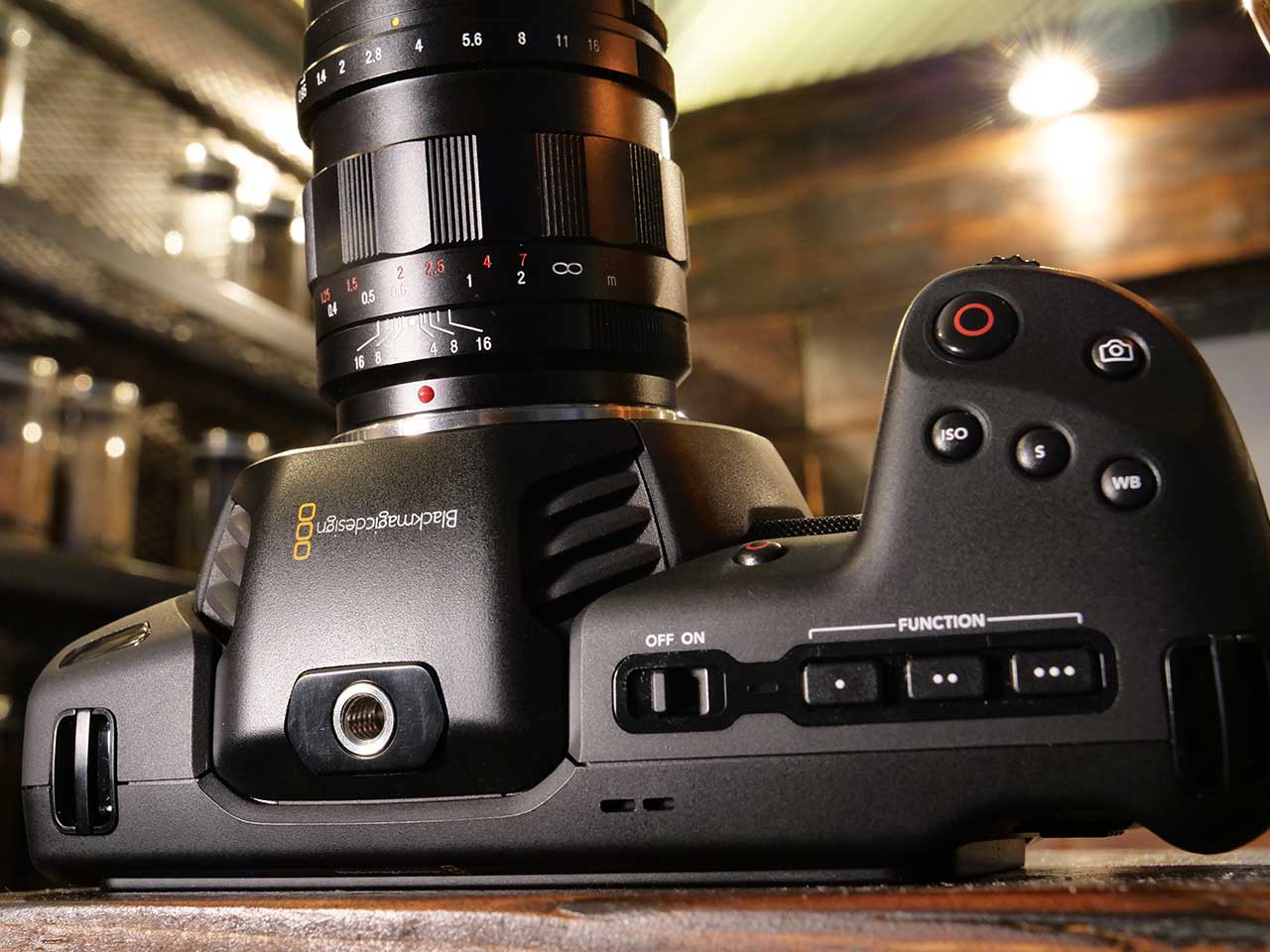
The button layout also appears carefully thought through. On top of the camera is your On/Off switch plus three Custom Function buttons. There are also direct controls for White Balance, Shutter Speed and ISO on the top plate.
Press any of these, and then the wheel on the handgrip will let you navigate through the options. You can also access these controls via the touchscreen and still use the wheel.
Also on the top plate is the record button and a button for capturing still images while recording.
On the back of the camera is the massive touchscreen, which is bright and responsive. It sits next to buttons for Iris control, Playback, Zoom in and a hamburger button which is your access to the main menu system.
But let me talk about this menu system. I love the Panasonic GH5, but I’ll be honest and say that its menu system overwhelms me. I bought a book explaining how to navigate the GH5’s menu system because I found it so complex. And if a book has been written about it, I’m probably not the only one.
The Blackmagic Pocket Cinema Camera 4K menu system is not only incredibly easy to use, it’s possibly the best menu system I’ve seen to date. What drives this is common sense.
When you select one function in the menu, any other functions that don’t apply will disappear from subsequent menus, leaving you with only the few choices that apply to you in this situation.
For instance, if you select raw recording, all the ProRes menu options will disappear. This really impressed me. I only saw what I needed to see, and I could make adjustments very quickly.
It’s one of those innovations that makes you think to yourself, Why has no one done this before?
Overall, I am very impressed at the attention to detail in the Blackmagic Pocket Cinema Camera 4K’s design.
Performance
I first got to use the Blackmagic Pocket Cinema Camera 4K at its launch event in Manchester. We were filming at the Three Rivers gin distillery – who’s gin I can wholeheartedly recommend, by the way! – where we had a range of different light conditions set up for us to test the camera’s dynamic range and other features.
When you power on the Pocket Cinema Camera 4K the touchscreen springs to life bang on four seconds, and then you’re ready to go.
The gin distillery was set up with deliberate low-light conditions. The idea was to test the Pocket Cinema Camera 4K’s dynamic range and ability to get usable images in available light.
In one room in particular light levels were so low that I couldn’t read my watch. Setting the camera to its Inverse Color mode immediately showed me where my highlights were being clipped around a couple of bare bulbs in the corner of the room.
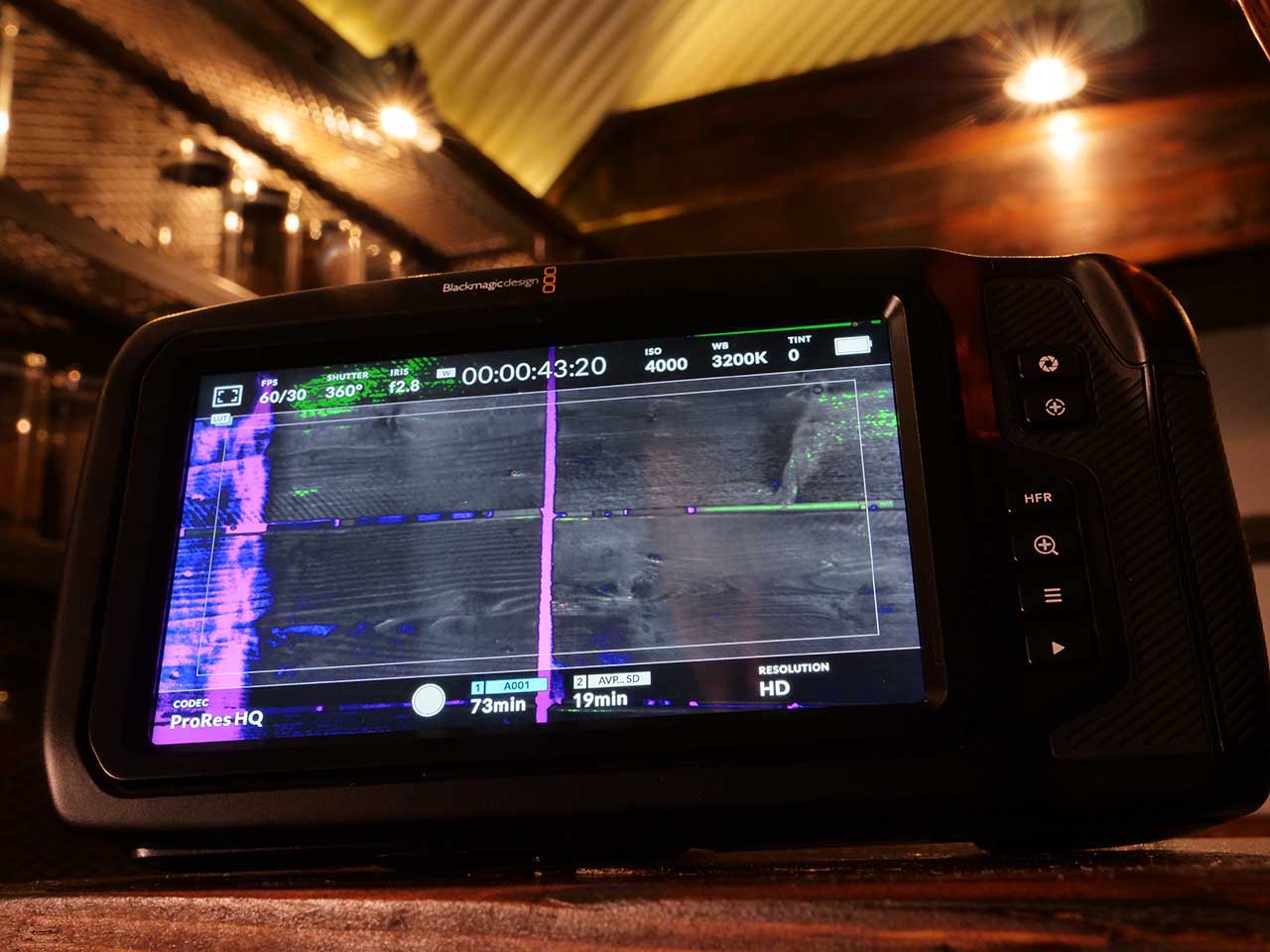
Inverse Color mode
Wanting an exposure of around 1/120sec, I pushed the ISO up to 1600 and watched the highlight information reappear on screen. Turning off the Inverse Color mode, I had a clean, beautiful image in very low light.
Such latitude with the sensitivity meant I had the freedom to experiment with the Iris control and try out different depth of field effects. In a room filled with rows of symmetrical distillery equipment, this was a lot of fun.
What’s clear about the Blackmagic Pocket Cinema Camera 4K after using it for an afternoon is that there’s something here for everyone.
Those still learning the ropes around moving images will appreciate its user-friendliness. Blackmagic has really tried to make a cinema camera for everyone, and has really succeeded.
If you’re new to video there will be a bit of a learning curve in terms of understanding the jargon that comes with the territory. But you can pick that up pretty quickly. And once you do, the menu system and controls are so intuitive that you’ll find yourself experimenting with a bit more focus and understanding than you might were you taking your first steps in video on a hybrid mirrorless camera.
What’s interesting is Blackmagic has taken a real DSLR approach to the camera in terms of its iris and shutter speed adjustments. You have controls on the front and back of the camera, and essentially the Pocket Cinema Camera 4K gives you camcorder abilities and terminology in a DSLR-styled body, which will make the shooting process more familiar and intuitive for a lot of users who are new to cinema cameras.
If you’re using it in isolation you’ve got a massive amount of features, such as logging and a range of resolutions. You can shoot at 4K at 60p and Full HD.
What I liked is that there are a lot of different capture formats in the Pocket Cinema Camera 4K. No matter who you’re doing work for, you can incorporate footage shot with this camera into lots of different types of workflows. There’s a lot of versatility here that would let you work seamlessly with larger productions.
Other things I liked… the Blackmagic Pocket Cinema Camera 4K’s dual native ISO produces clean, usable footage in very low light. Because it uses Micro Four Thirds, you can capture great depth of field and richness of tone that is sometimes difficult to get with a hybrid CSC.
The touchscreen is also really quick and easy to find your way around. And because it’s so big (5 inches) you can really get a good sense of the image quality in your scenes. I found it really lets you see the effect of depth of field nicely, then you can adjust as needed.
After you fine tuning focus, I could just adjust my shutter speed so it’s double my frame rate. I always felt confident I was going to get what I wanted.
Setting up is also very straightforward given the menu system and range of controls.
The dual SD and CFast memory card slots offers maximum compatibility. If you’re often working with editors, this is a good option. Also being able to record directly to an external hard drive is great for when you need to record 12-bit raw.
And if you want to expand on the system, it has a wealth of ports for attaching external microphones, such as a Rode NTG4+.
Other nice touches are a Full Size HDMI out so that you output your footage to a Ninja, and there’s external power socket so you can connect to the mains for longer shoots
The peaking is also really useful for knowing when you’re in focus. Sebras are fully adjustable and a real asset for knowing when you’re burning out highlights.
The onboard mics were also simply incredible.
It’s also worth noting that the Blackmagic Pocket Cinema Camera 4K uses LP-E6 batteries, which are the same as the Canon 5D and 6D series cameras use.
Overall, the Pocket Cinema Camera 4K is just super easy to use and incredibly versatile. And that price!
Verdict
The Blackmagic Pocket Cinema Camera 4K is a camera with true crossover appeal. Professionals will appreciate its dynamic range and audio options, as well as the ability to record directly to an external hard drive. It can proudly serve as a secondary camera on shoots and is compatible with a wide range of Micro Four Thirds lenses.
Beginners and vloggers will love the menu system and range of controls. I think they’ll also really appreciate its dual native ISO, as well, and the flexibility that brings for filming just about everywhere.
Some will point out the lack of in-body stabilisation as a drawback, and sure, IBIS would be nice, but you have to remember this is a £1000 camera. This is a cinema camera with professional spec at a price point many can afford. Including stabilisation adds to the cost.
And when you consider there are affordable options out there for stabilising your footage, such as the DJI Ronin-S or FeiyuTech A1000, I’ll take the Pocket Cinema Camera 4K as it is.
An articulated LCD would be very handy for the vlogging segment buying this camera. The vari-angle LCD is certainly one of my favourite features on the Panasonic GH5 and makes recording our YouTube videos so much easier. But, again, these design features have costs.
Should I buy the Blackmagic Pocket Cinema Camera 4K?
If you are into high-quality vlogging or are looking for a high-quality video camera and you’re not bothered by stills, this is the one. Buy it now.
If you want a dedicated video camera for your business or film club, the Pocket Cinema Camera 4K is ideal. Buy it now. It’s a really good, professional style camera and very affordable.
The only downside of the Pocket Cinema Camera 4K is that because Blackmagic packed in professional quality components, the company has had to cut costs elsewhere to keep the £1000 price tag as amazing as it is.
This has come at the expense of build quality. The Pocket Cinema Camera 4K is not a pretty design, and the camera is a bit plasticky. There is also no articulated LCD. But of course, it’s just £1000.
If you can look past a slightly garish design and plastic build, the guts of this machine are high quality features you can rely on for whatever the job at hand.
